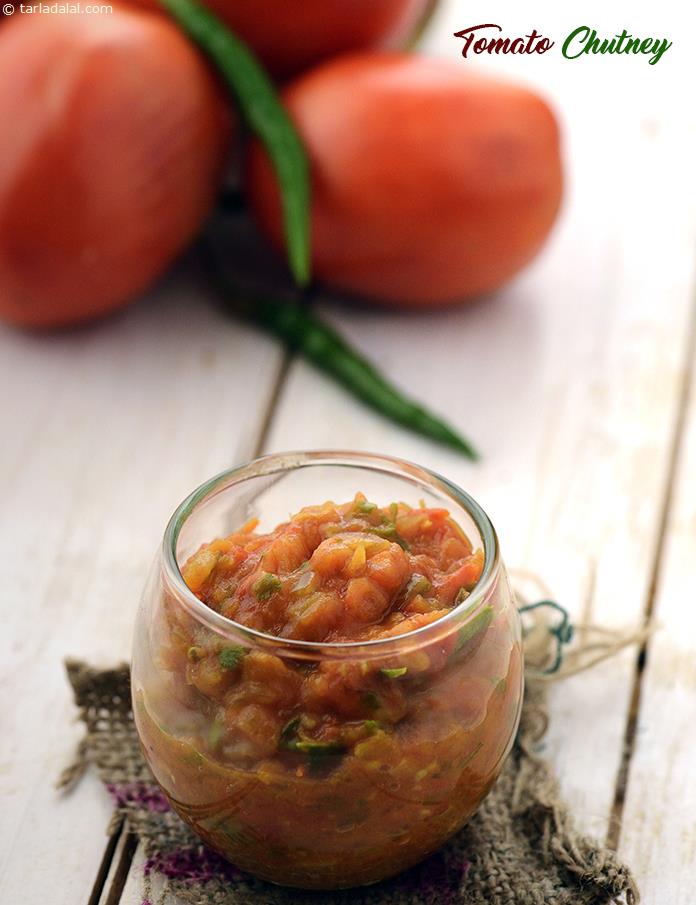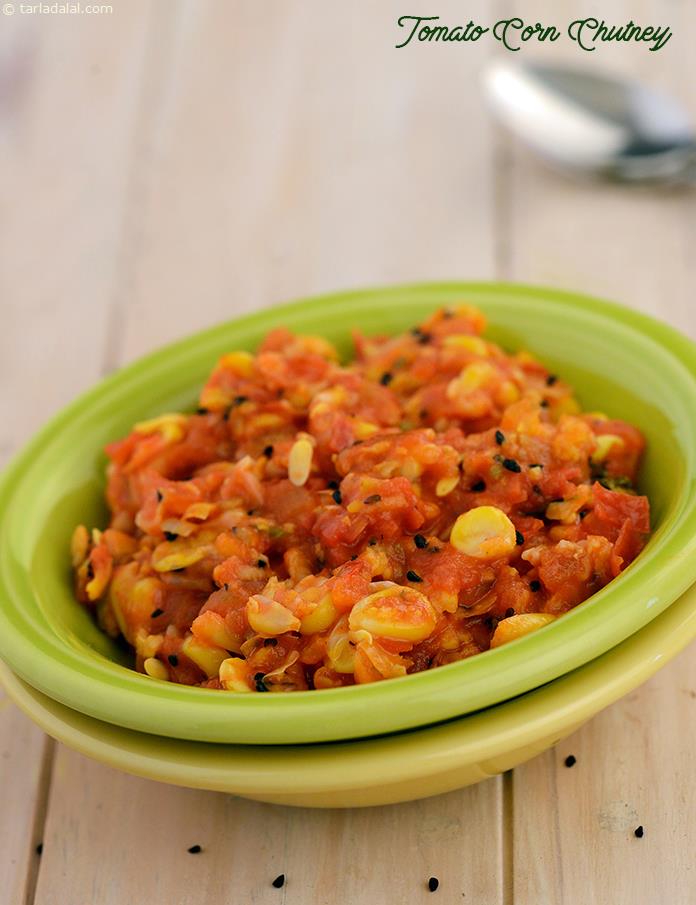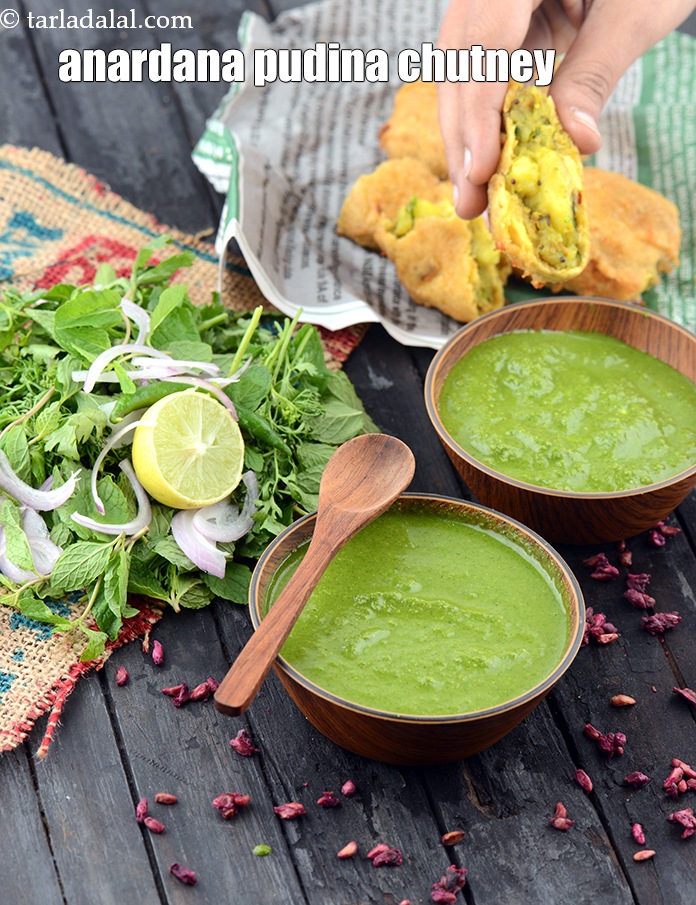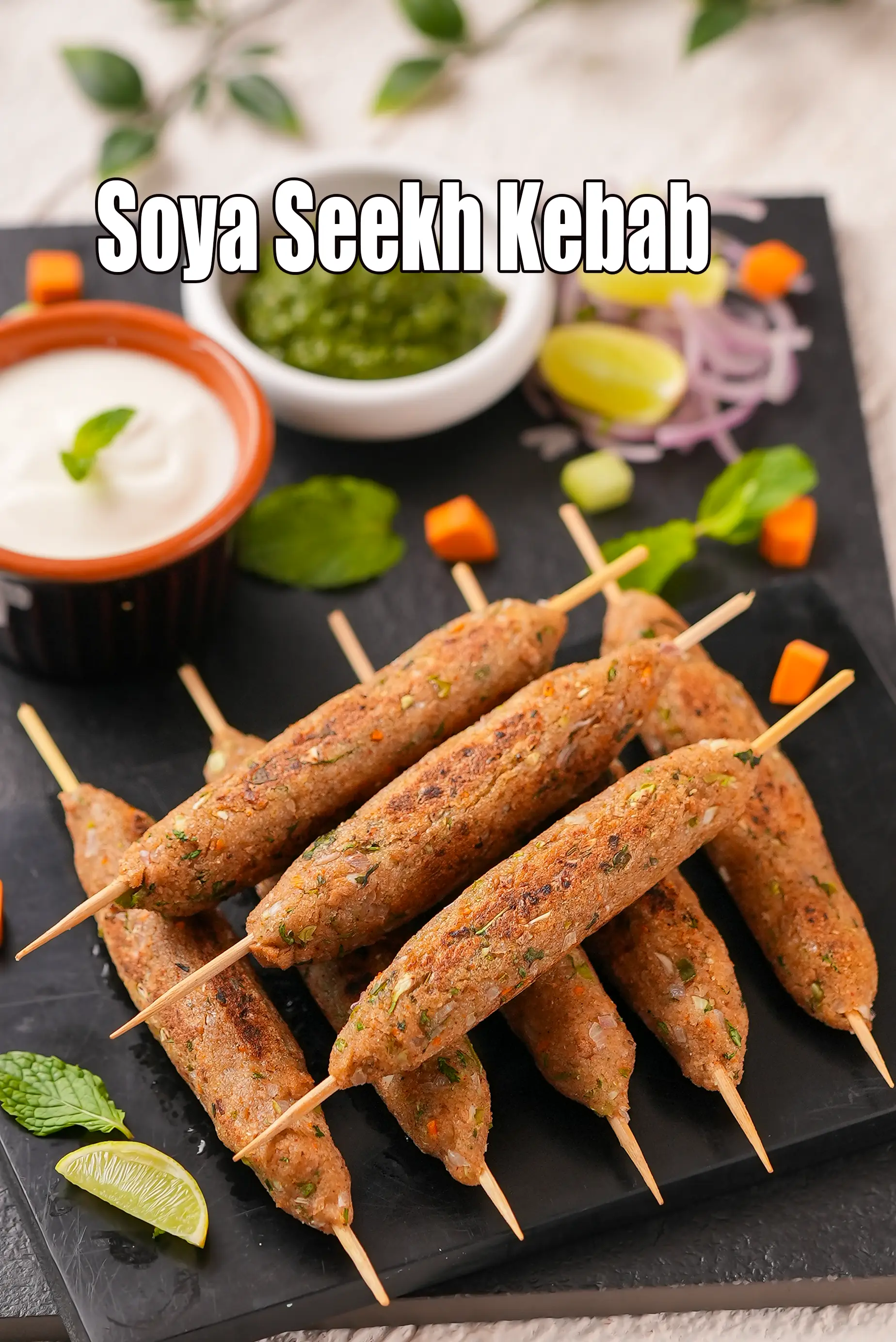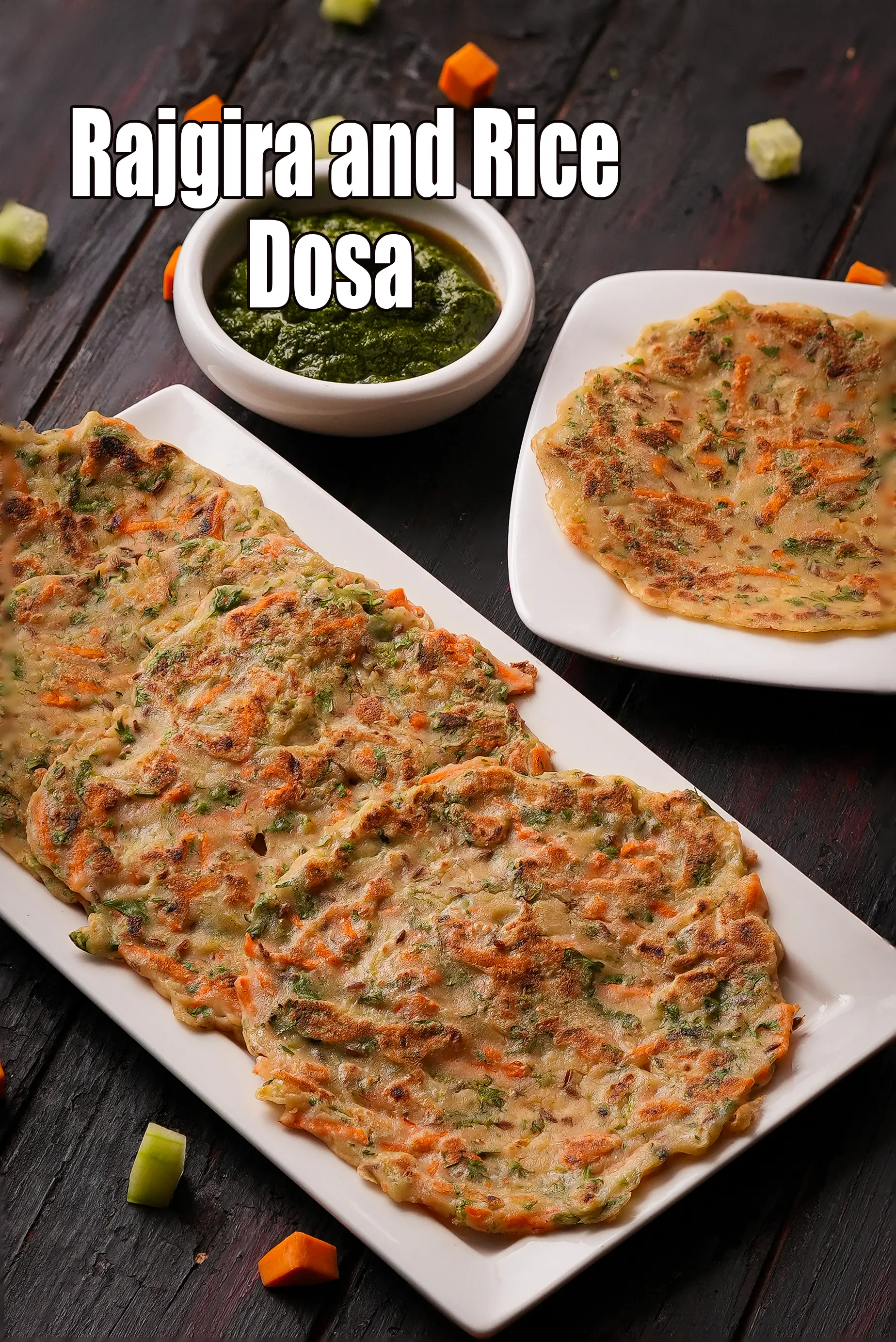You are here: Home> Cuisine > Indian Veg Recipes > South Indian > South Indian Chutney > Radish Chutney, Mooli Ki Chutney
radish chutney recipe | mooli ki chutney | healthy mooli chutney |

Tarla Dalal
23 July, 2021

Table of Content
radish chutney recipe | mooli ki chutney | healthy mooli chutney is a unique chutney loaded with health benefits. Learn how to make mooli ki chutney.
To make radish chutney, combine all the ingredients in a mixer and blend to a smooth mixture. Serve immediately or store refrigerated till use.
Radish has a lingering flavour similar to other pungent ingredients like onion, ginger and garlic, but is surprisingly not commonly used to make chutneys. In mooli ki chutney, radish is combined with flavourful mint and coriander, and tangy curds, to make a chutney that is well-balanced in flavour, colour and texture.
The radish in healthy mooli chutney has good amount of vitamin C in radishes is an antioxidant and possesses anti-inflammatory properties too. The mint is known for its cleansing effect, while coriander has antioxidants lutein and zeaxanthin which exhibit heart protective benefits. So whether you are a healthy individual or are suffering from diabetes or heart disease, you can include this chutney in your diet.
This radish chutney makes a great accompaniment for all Indian starters, but can be innovatively used as a dressing for Salads, or a spread for multigrain bread and so on.
Tips for radish chutney. 1. Do not add water for blending, as curd helps to get the necessary texture of the chutney. 2. Use this chutney within 2 days, else radish might release a strong odour.
Enjoy radish chutney recipe | mooli ki chutney | healthy mooli chutney | with step by step photos.
Tags
Soaking Time
0
Preparation Time
10 Mins
Cooking Time
0 Mins
Baking Time
0 Mins
Baking Temperature
0
Sprouting Time
0
Total Time
10 Mins
Makes
2 cups
Ingredients
For Radish Chutney
1 cup grated radish (mooli)
1/4 cup chopped mint leaves (phudina)
1/4 cup chopped coriander (dhania)
2 tsp roughly chopped green chillies
1/2 cup fresh curd (dahi)
salt to taste
Method
- To make radish chutney, combine all the ingredients in a mixer and blend to a smooth mixture.
- Serve the radish chutney immediately or store refrigerated till use.
Radish Chutney, Mooli Ki Chutney recipe with step by step photos
-
-
Like radish chutney | mooli ki chutney | healthy mooli chutney | then see our collection of chutney recipes and some recipes we love.
- low calorie green chutney | low cal hari chutney | low cal coriander chutney | diabetic green chutney | with 17 amazing images.
- lehsun ki chutney for chaat | red garlic chutney for sev puri, bhel, ragda pattice | with 8 amazing images.
- khajur imli ki chutney | date and tamarind chutney | pressure cooked meethi chutney | homemade khajur imli ki chutney | with amazing 16 images.
- Mysore chutney recipe | South Indian Mysore chutney | with 17 amazing images.
-
Like radish chutney | mooli ki chutney | healthy mooli chutney | then see our collection of chutney recipes and some recipes we love.
-
- What is radish chutney made off? mooli ki chutney is made from 1 cup grated white radish (mooli), 1/4 cup chopped mint leaves (phudina), 1/4 cup chopped coriander (dhania), 2 tsp roughly chopped green chillies, 1/2 cup fresh curds (dahi) and salt to taste.
-
-
This is what white radish looks like.
-1-191017.webp)
![]()
-
Break the top off the mooli off with your fingers. So the radish leaves are seperate now.
-2-191017.webp)
![]()
-
Wash the mooli in running water to remove the dirt stuck to it.
-3-191017.webp)
![]()
-
Grate the mooli using a peeler to remove the outer skin.
-4-191017.webp)
![]()
-
To grate by hand, hold grater in one hand and the radish in the other. Rub the radish downward on the side of the grater with the appropriate sizes holes for the desired coarseness of the grated radish. Be careful to keep hands and fingers away from the grater.
-5-191017.webp)
![]()
-
This is what white radish looks like.
-
-
This is what mint leaves look like.
-1-191018.webp)
![]()
-
Trim off the roots and separate the mint leaves.
-2-191018.webp)
![]()
-
Place the mint leaves in a deep glass bow. Immerse the mint leaves in clean water. Wash the leaves by using your hands to remove the dirt.
-3-191018.webp)
![]()
-
Strain the water out using a sieve.
-4-191018.webp)
![]()
-
Put the washed leaves on a chopping board and chop them using a sharp knife into finely chopped or roughly chopped by cutting across the board.
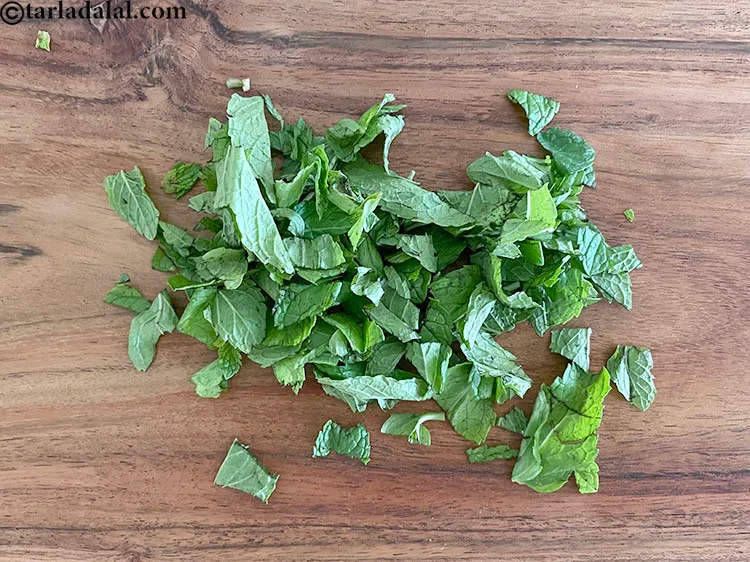
![]()
-
This is what mint leaves look like.
-
-
In a mixer put 1 cup grated white radish (mooli). Radish has many heart protective nutrients like Vitamin C, folic acid, calcium, potassium and flavonoids. They are an amazing source of fibre which helps in lowering cholesterol levels. The vitamin C in radishes is an antioxidant and anti-inflammatory which can help arthritis patients. Potassium from radish can help lower your risk of kidney stones. See detailed benefits of radish.
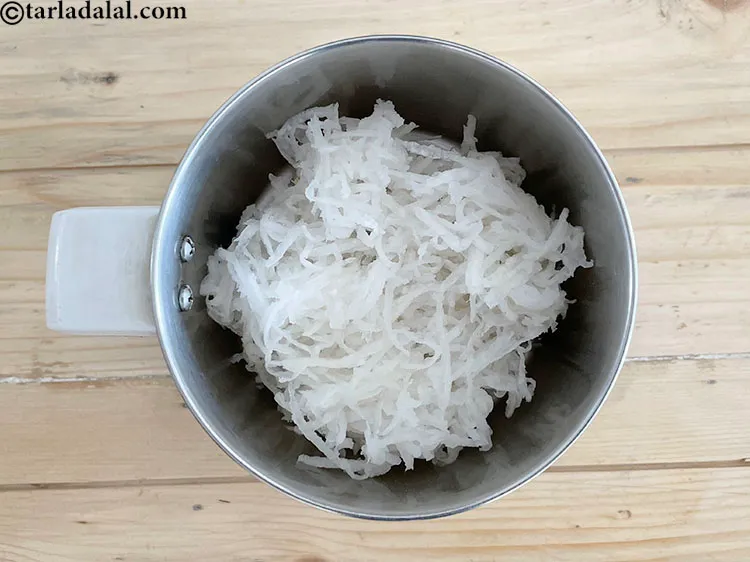
![]()
-
Add 1/4 cup chopped mint leaves (phudina). Mint (pudina) being an anti-inflammatory reduces the inflammation in the stomach and shows a cleansing effect. Sipping on a healthy drink like fresh mint and lemon tea is the best option to overcome nausea for mums-to-be. Moreover it's vitamin A (10% of RDA) and vitamin C (20.25%) serve as an additional boost to bring relief from cough, sore throat and also cold. Mint (pudina) is a leafy vegetable which is sure to create nourishing dishes without piling on calories, carbs or fat for that instance. What is has to offer instead is FIBER. See here for detailed benefits of mint leaves.
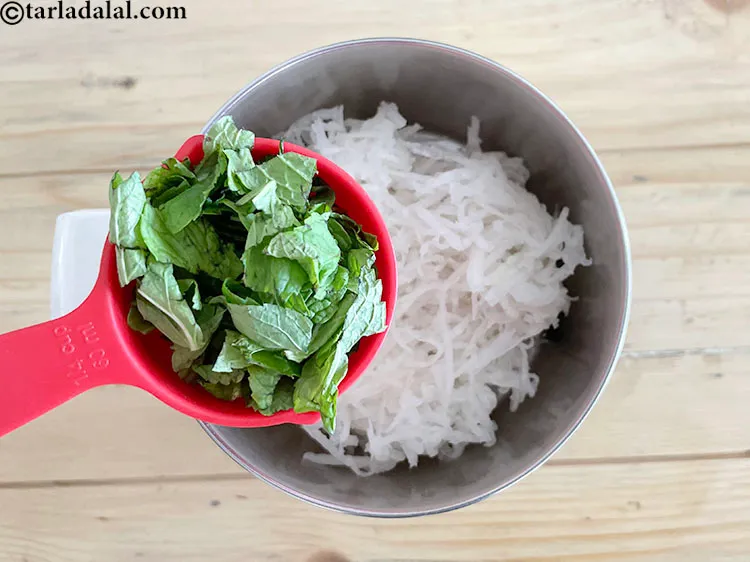
![]()
-
Add 1/4 cup chopped coriander (dhania). Coriander is a fresh herb often used as a flavour enhancer in Indian cooking. It is mainly used as a garnish. This is the best way to use it - no cooking. This preserves its vitamin C content which helps to build our immunity and bring that sparkle to the skin. The antioxidants vitamin A, vitamin C and the quercetin present in coriander works towards strengthening our immune system. Coriander is a fairly good source of iron and folate – the 2 nutrient which help in the production and maintenance of red blood cells in our blood. Good for reducing cholesterol and good for diabetics. Read 9 benefits of coriander to understand details.
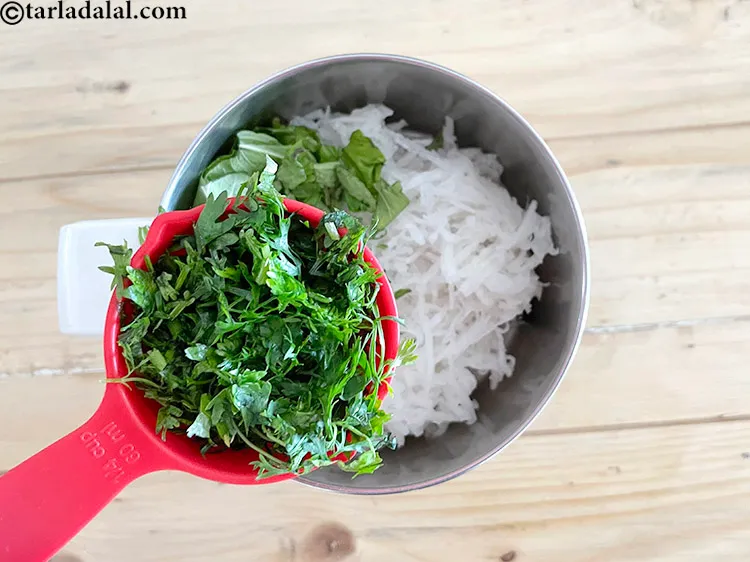
![]()
-
Add 2 tsp roughly chopped green chillies. Antioxidant vitamin C in green chillies protects the body from effects of harmful free radicals and prevents stress. It is probably the high fiber which helps in controlling blood sugar levels. This it is a welcome addition to a diabetic diet. Suffering from anaemia? Add green chillies to your list of iron rich foods too. For complete details see benefits of green chilli.
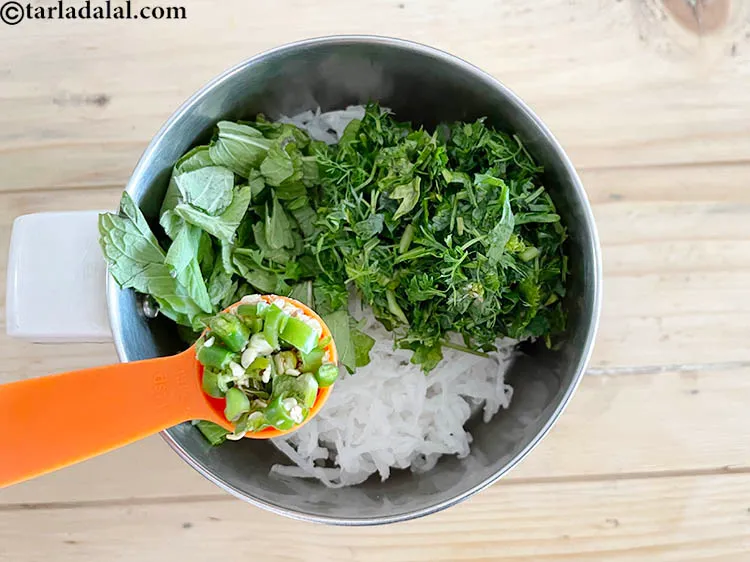
![]()
-
Add 1/2 cup fresh curds (dahi). Curds help in digestion as it has very good bacteria. Probiotics in curds acts as a mild laxative but, in case of diarrhoea and dysentery, it is a boon, if curd is used with rice. Curd is one of the richest source of protein, calcium and minerals. They help in weight reduction, good for your heart and build immunity. Being low in sodium, it is safe to be eaten by individuals with high blood pressure. The only difference between curds and low fat curds is the fat level. Read the benefits of curds to include in your daily diet.
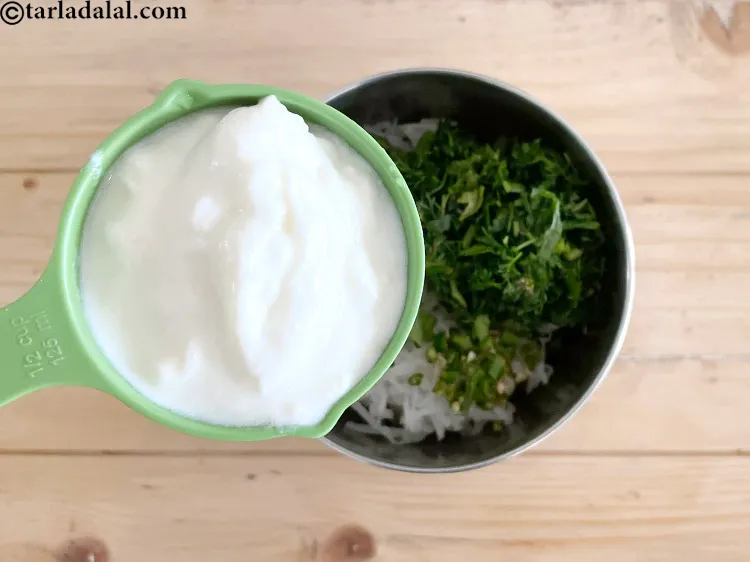
![]()
-
Add salt to taste.
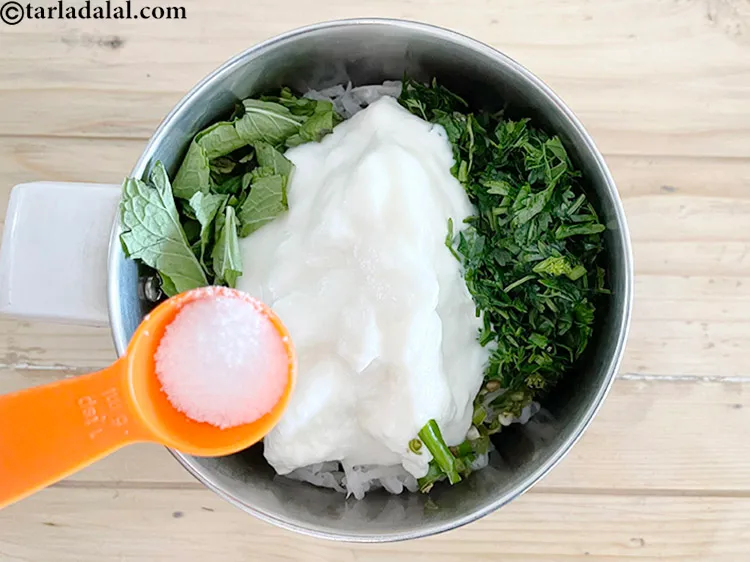
![]()
-
Blend to a smooth mixture. First pulse for 5 to 10 seconds. This is the first of three images of chutney blending.
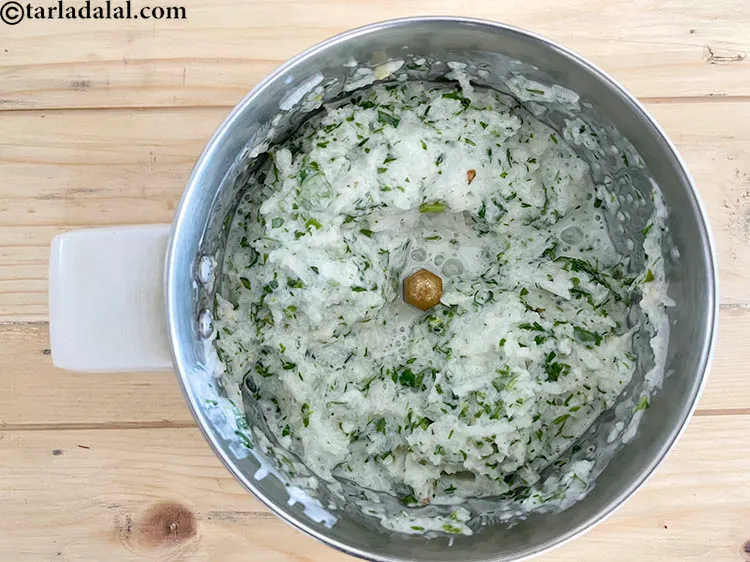
![]()
-
Pulse again. This is the second of three images of the process of blending.
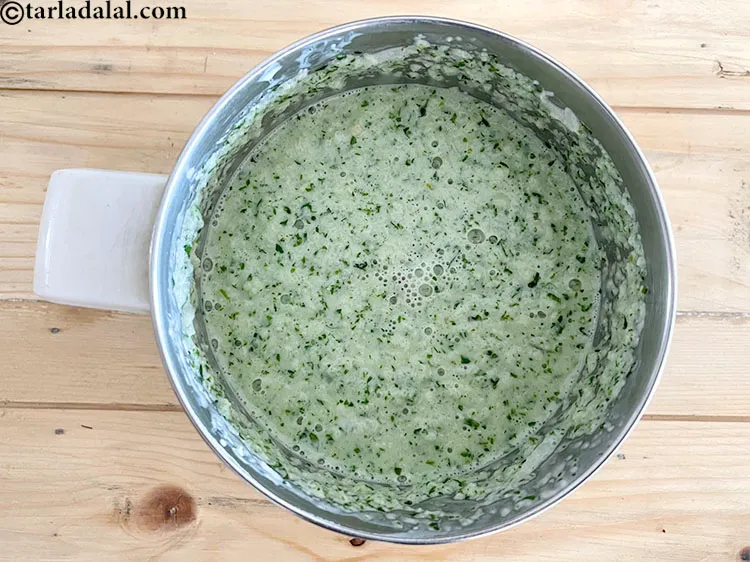
![]()
-
The chutney is ready. This is the third image of the blending.
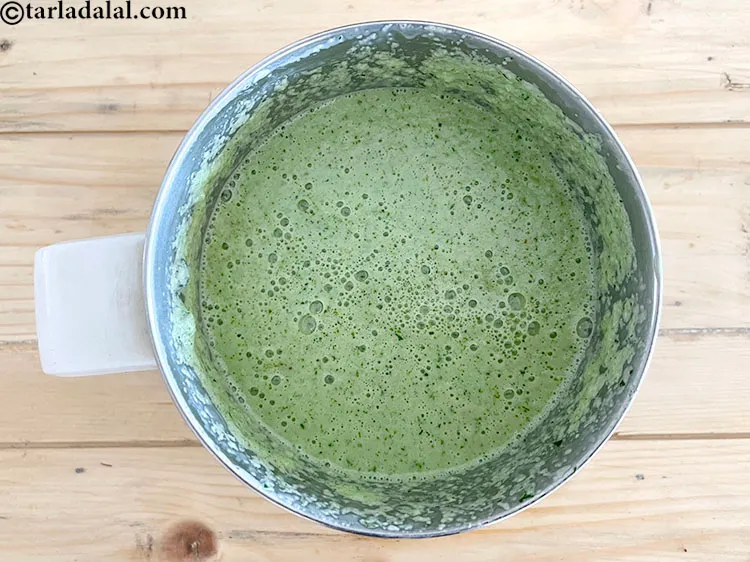
![]()
-
Serve immediately.
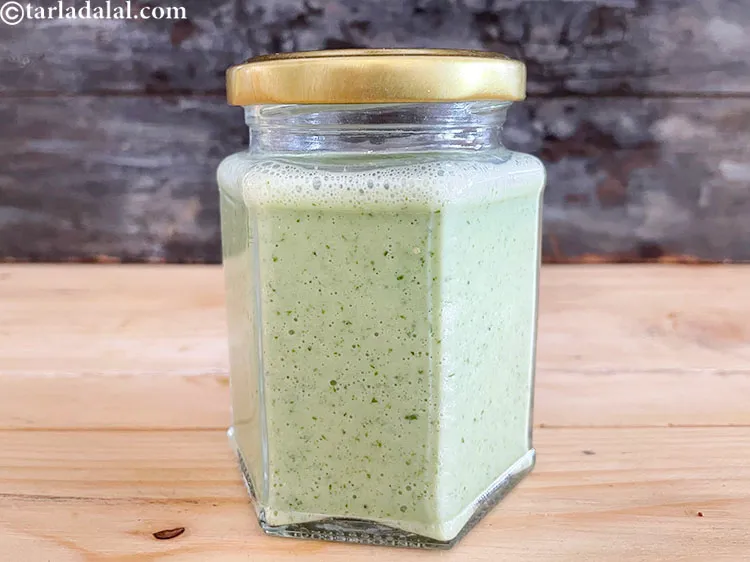
![]()
-
or store refrigerated upto 2 days. Reason is that radish can start releasing a strong odour.
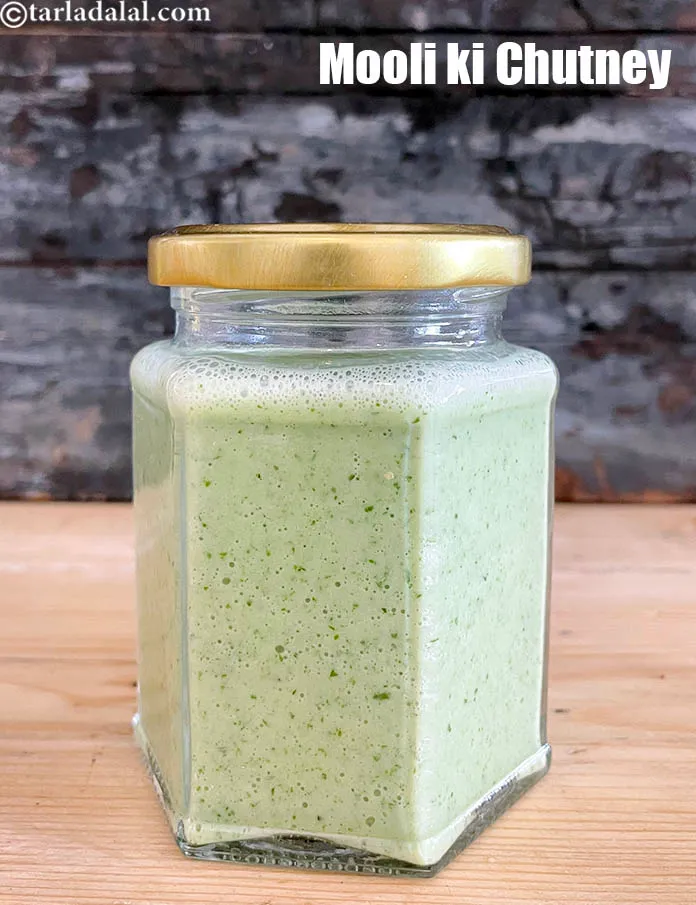
![]()
-
In a mixer put 1 cup grated white radish (mooli). Radish has many heart protective nutrients like Vitamin C, folic acid, calcium, potassium and flavonoids. They are an amazing source of fibre which helps in lowering cholesterol levels. The vitamin C in radishes is an antioxidant and anti-inflammatory which can help arthritis patients. Potassium from radish can help lower your risk of kidney stones. See detailed benefits of radish.
-
-
Do not add water for blending, as curd helps to get the necessary texture of the chutney.
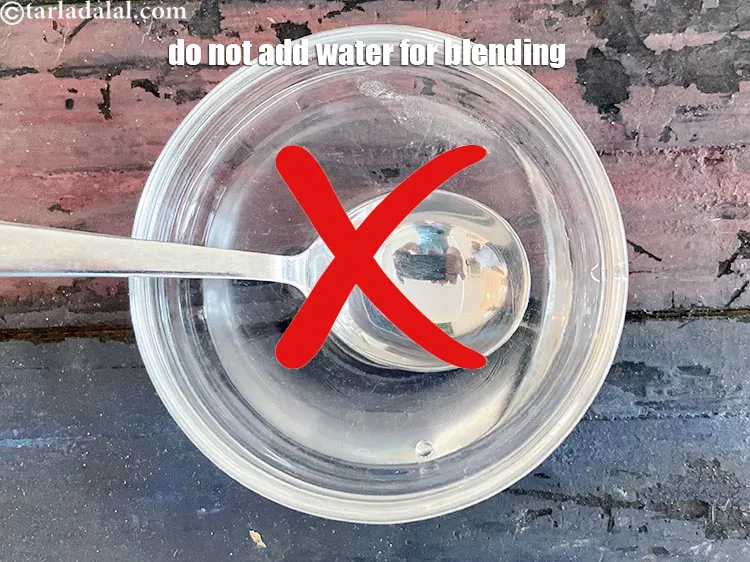
![]()
-
Use this chutney within 2 days, else radish might release a strong odour.
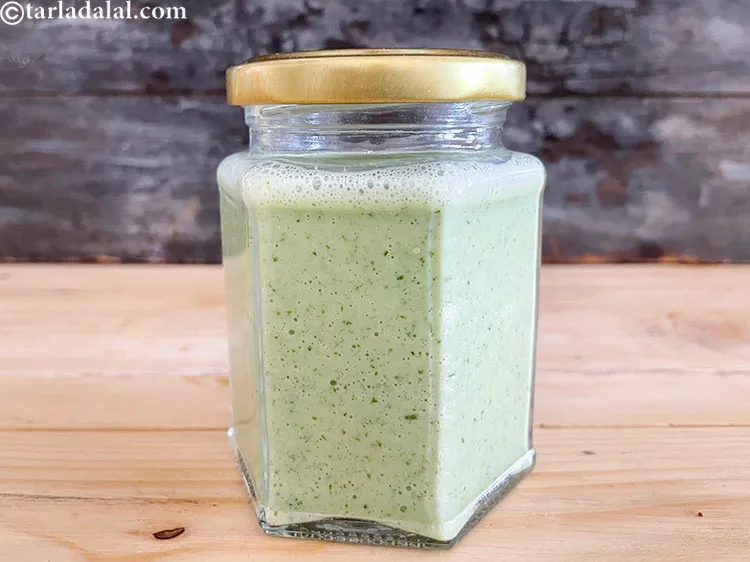
![]()
-
Do not add water for blending, as curd helps to get the necessary texture of the chutney.
-
-
Radish chutney – a healthy accompaniment.

![]()
- Radish abounds in vitamin C, which helps to reduce inflammation in the body. It also aids in boosting immunity.
- Radish is also a fair source of fibre which helps to cleanse the digestive tract.
- Curd is probiotic and thus aids in digestion too.
- Coriander is a storehouse many antioxidants. Linoleic acid, oleic acid and stearic acid work well to reduce the LDL cholesterol (bad cholesterol) and promote artery and cardiac health.
- This chutney can be added to a diabetic, weight loss and healthy heart diet.
-
Radish chutney – a healthy accompaniment.
Nutrient values (Abbrv)per plate
| Energy | 7 cal |
| Protein | 0.3 g |
| Carbohydrates | 0.5 g |
| Fiber | 0.2 g |
| Fat | 0.3 g |
| Cholesterol | 0.8 mg |
| Sodium | 2.8 mg |
Click here to view Calories for Radish Chutney, Mooli Ki Chutney
The Nutrient info is complete

Payal Parikh 86
July 14, 2020, 11:55 a.m.
This chutney is really very unusual and tasty...it is spicy and great to serve with tikkis and kebabs...

Foodie#417416
June 1, 2020, 10:11 p.m.
Excellant

Archana M
May 20, 2020, 10:16 a.m.
Radish chutney.. never thought of it.. but after trying this recipe.. it was just superb.. with tangy sharp taste of the curd and radish.. with mint and corainder which gives nice flavour to the chutney.. this is a must try recipe.. goes well as an accompaniment.

Aria
Oct. 3, 2019, 10:28 a.m.
Great recipe! It is perfect for this summer weather as it is fresh, tangy and spicy. The idea of using radish is wonderful. Perfect to have with patties, or other starters. Would definitely recommend this chutney.

Tarla Dalal
Oct. 3, 2019, 10:28 a.m.
Thanks so much for trying our recipe, it means a lot to us. Keep trying more recipes and sharing your feedback with us.


-15444.webp)
